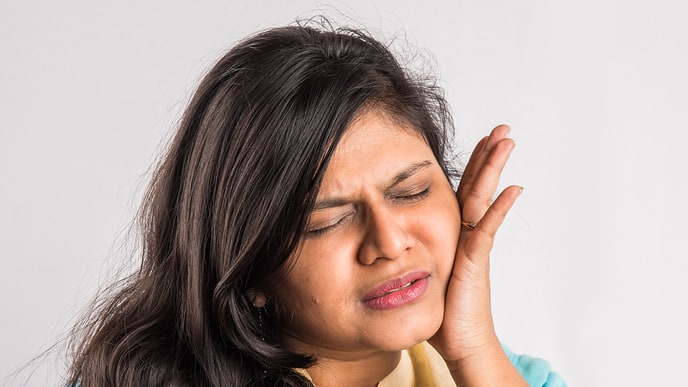The Origins of The Tooth Fairy
Unlike Santa Claus, the tooth fairy story has limited references and is rooted in European folklore. The popular version of the tale prompts kids to keep their lost baby teeth under their pillows before sleep. A fairy is believed to descend from the sky to collect the teeth and place money or gifts as a reward. The fairy shall return to the castle to transform the collected teeth into stars. The concept is a fun distraction for kids so they do not worry about their lost teeth.
The tradition evolved from old customs and superstitions in mediaeval Europe. Lost teeth were burned or buried to protect the kids from evil or witchcraft and to invite good luck. The modern tooth fairy idea became popular in 20th-century America. It was fuelled by fairy tales in children’s books and the commercialisation of childhood traditions. The phenomenon gained momentum after Esther Watkins Arnold mentioned the tooth fairy in the English playlet.
Tooth Fairy Traditions Around The World
Tooth fairy traditions largely vary across the world. The belief and the depiction of the character differ across cultures and countries, and kids enjoy it regardless. Some imagine a small, winged figure with a wand, while others picture it as an animal, like a mouse or a cat. The fairy is male for some people while female for others. Here are some interesting customs to learn about:
United States & United Kingdom: In the U.S., Canada, and the U.K., kids place their lost teeth under their pillow and imagine a winged fairy exchanging them for gifts or money. National Tooth Fairy Day honours the fancy figure and oral health.
Spain & Latin America: Spanish kids and those from Latin American countries like Mexico imagine a little mouse (called Ratoncito Pérez) who collects teeth and leaves gifts, coins, or treats under the pillow. France and Italy have similar beliefs but different names for the imaginary mouse.
Eastern Europe: In countries like Ukraine and Lithuania, kids throw the lost teeth onto the roof or bury them in the ground, hoping for stronger new teeth. Russian kids put them in a mouse hole, wishing for strong teeth like the mouse.
Middle East: The common tradition is tossing the lost teeth towards the sun or the sky with a chant or wish for healthy new teeth. Turkish families bury the lost tooth near a special place like a school or garden, believing it influences the kid’s future success.
Central & East Asia: Japanese and Chinese kids throw their lost lower teeth onto the roof and upper teeth below the bed, wishing for strong and straight new teeth. South Koreans call for a bird to pick the tooth from the roof for good fortune. Mongolian kids wrap their lost teeth in meat and feed the dogs, hoping for stronger new teeth.
South Asia: In various parts of India, the lost teeth are thrown onto the roof, accompanied by chants asking for strong and healthy new teeth. Some kids offer fallen teeth to animals like rats, hoping to get stronger new teeth. Countries like Sri Lanka and Bangladesh have similar traditions.
How Much Does The Tooth Fairy Pay?
As the tooth fairy concept is not a part of India’s traditional folklore, there is no standardised or widespread practice of payouts, unlike in Western countries. However, with the adoption of the tradition in many urban and modern families, the money under the pillow can greatly vary. It depends on various factors, such as the family’s traditions, beliefs, economic preferences, location, and the lost tooth.
The average payout may range from ₹1 to ₹5 in rural or suburban families. In urban areas, the tooth fairy may be more generous, with payouts anywhere between ₹10 to ₹100, depending on what the family feels appropriate. Losing a healthy tooth may attract a better reward. The payout may be greater when the first milk tooth is lost, a milestone. Unforeseen events like premature tooth loss due to injury or the child being unaware of the lost tooth may affect the payout.
Fun Tooth Fairy Ideas for Parents
Unlike adults who engage in Netflix series or TV shows or hit the box office to cheer their mood, children are easily delighted by little surprises with a magical touch. However, as a parent, it is vital to care for your kid’s oral health as well. While the tooth fairy concept instils joy and excitement in kids, you may also use it to create awareness and foster dental care habits. Here are some fun ideas to promote oral health while keeping the experience magical:
Personalised Note: Prepare a note using some colourful paper, sketch or glitter pens, and stickers and keep it beside the money. You may also add a piece of dental care advice, like “Brush twice daily to keep your teeth shining bright till I visit again!”. Make sure to use the resources discretely for this purpose.
Gift Pouch: A gift from the tooth fairy is the best excuse to lure your little one into oral care habits. Place a pouch or bag with a toothbrush, toothpaste, and floss, along with the cash reward. Children’s teeth require delicate care. Dentistry recommends kids-friendly toothbrushes and toothpaste formulae. You may explore Colgate’s themed toothbrushes and natural-flavoured toothpaste collection for kids.
Brushing Calender: Along with the money, leave a colourful chart or calendar with boxes for each day to tick after brushing twice daily and flossing once. Both your child and you can track each day’s oral care practice. Include reward milestones (like a week) and small prizes or a surprise visit from the tooth fairy for the achievement.
Certificate: Prepare a certificate to acknowledge the lost tooth by mentioning the child's name, age, and date. You may also highlight the lost tooth on a baby tooth chart image in the certificate. This can be a fun souvenir for each tooth lost.
Magical traces: Sprinkling some glitter or “fairy dust” on the pillow, floor, and near the window can create the magical feel of a fairy visit that excites your little one. You may also place fairy footprints on the floor using powder or flour. Plush toys and other gifts can also add an element of surprise and delight.
Avoiding Tooth Inflation
As the tradition gains popularity, parents are likely to feel the pressure of rewarding generously for each lost tooth. It escalates as children discuss their rewards in schools or neighbourhoods. This leads to tooth inflation, where parents must reward large sums of money to meet their child’s expectations. Preventing the payouts from flaring up helps avoid unnecessary financial strain on families and unrealistic hopes among kids. The following tips can be helpful:
Tooth payouts need not be expensive. It is best to keep them small and consistent.
Shift the focus from money and material rewards to the importance of life moments and good oral hygiene.
As children grow, encourage them to be mindful and responsible for their oral health.
Keep the tradition a fun gesture rather than a competitive one.
Among other traditions, the tooth fairy concept is a delightful way to celebrate the milestones of your little one. Magical fairy tales and surprises can make your kid’s milk tooth loss a joyful and cherishable moment. It is best to focus less on cash rewards and keep them modest to avoid tooth inflation. Including ideas to promote your child’s dental health makes it more meaningful. Thus, you can sustain the tradition to inspire imagination and create lasting memories in the family.
Frequently Asked Questions
1. Is the tooth fairy real?
The tooth fairy is a fictional figure that originated in Western tradition and folklore. The tradition is meant to make the experience of losing baby teeth enjoyable for kids. Despite different depictions and tales, kids worldwide experience excitement. It not only creates wonderful memories but also fosters good oral hygiene habits as children grow.
2. Why is it called a tooth fairy?
The term combines the concepts of fairy tales, magical beings, and the exchange of lost teeth for money or gifts. The idea of the character visiting when kids sleep adds to the surprise and fantasy element. The concept of a magical being rewarding the lost tooth with gifts makes the child forget the worry about the lost tooth.
3. What age do kids usually lose their first tooth?
Most kids typically lose their first baby tooth around the age of six. The timeline for the development of teeth can vary among children. Some kids lose their first milk teeth as early as the age of five, while for some, it can be as late as the age of eight. In general, most children shed their milk teeth between six and twelve years of age.
4. Are there different tooth fairy traditions around the world?
Yes, tooth fairy traditions and beliefs greatly vary across the globe. Kids in the West keep their lost teeth under their pillows for a winged fairy to exchange them for gifts and money. Spanish, French, and Latin Americans imagine a little mouse who collects teeth and leaves rewards. In Eastern Europe and East and South Asia, kids throw their lost teeth onto the roof, bury them, or offer them to animals, hoping for strong new teeth.
This article is intended to promote understanding of and knowledge about general oral health topics. It is not intended to be a substitute for professional advice, diagnosis or treatment. Always seek the advice of your dentist or other qualified healthcare provider with any questions you may have regarding a medical condition or treatment.
ORAL HEALTH QUIZ
What's behind your smile?
Take our Oral Health assessment to get the most from your oral care routine
ORAL HEALTH QUIZ
What's behind your smile?
Take our Oral Health assessment to get the most from your oral care routine













